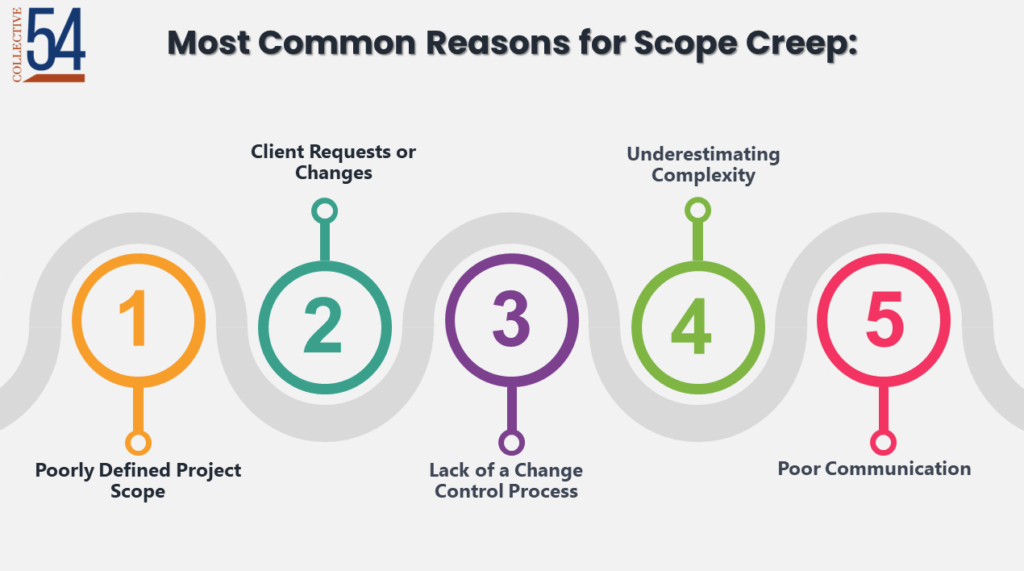5 Common Reasons for Scope Creep

“Scope creep” destroys firm profits and client satisfaction.
Here are five causes of scope creep in boutique professional service firms:
- Poorly Defined Project Scope: If a project’s goals, deliverables, and tasks aren’t clearly defined at the outset, it can be easy for additional work to be added, leading to scope creep.
- Client Requests or Changes: A client may request additional work after the project has started. While it’s important to accommodate client needs, this can lead to scope creep.
- Lack of a Change Control Process: Without a well-defined change control process, changes can be made without consideration for their impact on the project’s timeline or budget.
- Underestimating Complexity: If the complexity of tasks or requirements is underestimated, it can lead to additional work being needed, causing scope creep.
- Poor Communication: If there’s a lack of clear, regular communication between the firm and the client, misunderstandings can occur about what’s expected or needed, leading to scope creep.
- Poorly Defined Project Scope: If a project’s goals, deliverables, and tasks aren’t clearly defined at the outset, it can be easy for additional work to be added, leading to scope creep.
